|
za iyun' 2004 goda.
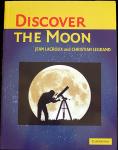 Discover the Moon
Discover the Moon
20.06.2004 | Lunnoe foto dnya
Do you want proof that the Moon is becoming more popular? A second beginner's guide to the Moon is now available! Following on the heels of Peter Grego's Moon Observer's Guide, French observers Jean Lacroux and Christian Legrand have published Discover the Moon.
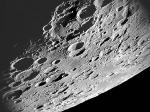 Janssen
Janssen
19.06.2004 | Lunnoe foto dnya
South of the Nectaris Basin the Moon has a sameness of flat-floored craters that makes identification of particular features difficult. One crater stands out as unique in this area of uniformity. Janssen is huge (190 km diameter) and weird.
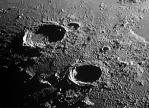 Frigid Buddies: Aristoteles and Eudoxus
Frigid Buddies: Aristoteles and Eudoxus
18.06.2004 | Lunnoe foto dnya
Aristoteles and Eudoxus are two of the largest young craters in the north polar region of the Moon. Aristoteles is 87 km wide and Eudoxus has a diameter of 67 km. These craters look pretty similar, both have terraced walls and hilly floors, apparently veneered with some smooth material - perhaps impact melt. Which is youngest?
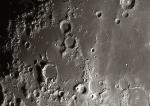 Marsh of Epidemics
Marsh of Epidemics
17.06.2004 | Lunnoe foto dnya
Some lunar backwaters are pretty interesting. Palus Epidemiarum is a marshy region squeezed behind both Mare Humorum and Mare Nubium. To be lava covered it must have been a depression, but there is no convincing evidence for a large crater or basin.
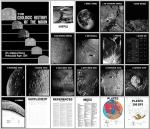 A Classic Returns!
A Classic Returns!
16.06.2004 | Lunnoe foto dnya
During the 20th century there were only two genuine classics of lunar science: Ralph Baldwin's 1949 Face of the Moon that demonstrated that lunar craters were of impact origin and the mare were volcanic lava flows, and Don Wilhelm's 1987 monumental US Geologic Survey Professional Paper 1348: The Geologic History of the Moon.
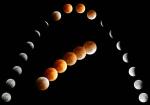 Magnificent Greek Eclipse!
Magnificent Greek Eclipse!
15.06.2004 | Lunnoe foto dnya
Across many parts of Europe clouds and rain blocked the lunar eclipse last evening. But in Athens, Greece, the clouds cleared 45 minutes before first contact and Anthony Ayiomamitis clicked away every five minutes, documenting the changing hue of the Moon as it orbited through Earth's shadow.
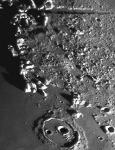 Cassini North
Cassini North
14.06.2004 | Lunnoe foto dnya
Cassini is an unusual looking crater. I think its because it is surrounded by Imbrium lavas so there is an abrupt boundary with its near rim deposits, and because it is filled with lava nearly to its rim. Cassini is a more extreme version of Archimedes.
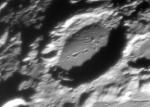 Mercy, Mersenius!
Mercy, Mersenius!
13.06.2004 | Lunnoe foto dnya
Mersenius is in the second rank of lunar craters. Not a must-see like Copernicus, Plato or Gassendi, but a good crater with more interesting features than are obvious. Mersenius is 84 km wide and about 2.3 km deep.
 Magnificent Moon!
Magnificent Moon!
12.06.2004 | Lunnoe foto dnya
Its impossible to take a single image of the Moon that shows topography across the entire Earth-facing side. Pablo Lonnie Pacheco of Monterrey, Mexico has responded to this impossibility with the most spectacular piece of image processing I have ever seen.
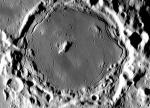 Awesome Pitatus
Awesome Pitatus
11.06.2004 | Lunnoe foto dnya
Pitatus is one of the under-appreciated gems of the Moon. With a diameter of 97 km it is about the same width as Plato (101 km), but has a much more interesting interior. Presumably Pitatus was a Copernicus style crater when formed, with magnificent concentric wall terraces and a large central peak.

